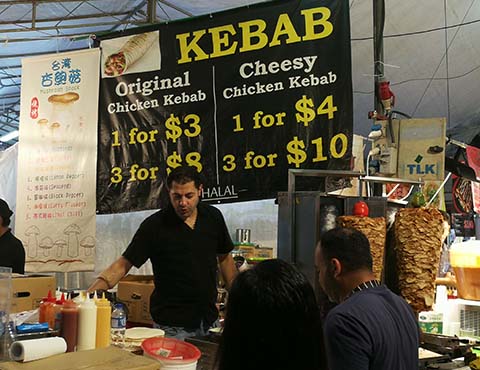
Recently, there have been a spate of news stories extolling cheap hawker meals. Each time I read them, I asked myself, “Why are we doing this? When we celebrate low prices, are we not whitewashing low purchasing power, and by extension, low wages and zero pensions?”
For my first example, let me point to the 6 Jan 2019 story in the Straits Times: Foodcourts in Singapore: Secret to Foodfare’s low prices. Ignore the fact that it was a kind of hagiography to parry criticism of NTUC Foodfare’s take-over of the Kopitiam chain of foodcourts. Embedded in the story was the message: We help Singaporeans because we sell cheap meals.
My second example is drawn from the Mothership website. On 11 January, its story about a $1 nasi lemak stall sang praises about the woman who held her price steady for 32 years in the name of “customer satisfaction”.
Now, I’m not one to quibble about competitive prices, and I benefit as much as anyone from cheaper meals. And indeed, the sacrifices that hawkers make have seldom been properly acknowledged. Nonetheless, we should be aware of the larger picture. Cheap meals are a balm over what should be a grating political issue: the fact that many Singaporeans would have to stretch their purses to pay more.
Why is this so when we boast of a per capita GDP of about US$61,000 in nominal dollars? This is higher than all the major European countries. And if you’ve ever travelled to Europe, the first thing you’d notice is how much costlier food is in those countries. So how is it that Europeans with a lower per capita GDP can afford costlier meals?
That’s because the per capita GDP is too crude a measure. Two other measures refine the picture. The first is the wage share as a percentage of the GDP. In the OECD countries, it is around 60% of GDP, meaning that around 60% of value added accrue to labour as compensation (which includes social security-type transfers but before taxes). See this paper, this one and this one.
I cannot find the analogous figure for Singapore from our Singstat website. I had to estimate a percentage from the figures in the ip-e40 Excelsheet (“Rebasing of Singapore’s national accounts to reference year 2010”). I obtained a figure of 45% as the wage share of GDP, roughly similar to a figure I recall reading some time ago. This means that Singaporeans are getting a smaller share of our GDP pie compared with those in the OECD countries.
Why is our per capita GDP so prominently featured, but our wage share percentage impossible to find even on our national statistics department’s website? Are we trying to hide something?
The other measure to consider is the Gini coefficient. It indicates how equally or unequally household income is distributed in an economy. Compared to the major European countries, household incomes in Singapore are spread over a wider range, as shown by our higher Gini coefficient.

The overall picture is this: Despite having an impressive-looking per capita GDP, a smaller share of our GDP goes to labour compensation compared to other advanced economies. This smaller share is itself more unequally distributed. A few people get a lot of income, many people get much less.
Even our Asian neighbours such as Japan and South Korea have less inequality. How so? To begin with, they have minimum wage laws. Currently, it is 848 yen per hour in Japan, roughly equivalent to S$2,020 per month (before overtime pay). In South Korea, the minimum wage is 8,350 won per hour, or roughly equivalent to S$1,927 per month.
And as for wage share of GDP, it is 55% in Japan and 62% in Korea (both 2015 figures).
The Singapore government resists minimum wage laws. It says such legislation will reduce employment. Economists do not agree that it’s so simple. In any case, unemployment in Japan and South Korea is a low 2.5% and 3.8% respectively despite having a minimum wage, which, by the way, applies to foreign workers too.
The Singapore government also resists the idea of state pensions. That’s why without cheap hawker food many senior citizens might go hungry. And why we see 75-year-olds with arthritis working in food courts too.
My parting shot is this: Maybe we ought to be ashamed of our hawker prices and food court scene. The contradiction between the wide demand for cheap food and the high per-capita GDP suggests something really wrong with income and wealth distribution in Singapore.
And let’s not forget, for meals to be priced cheaply, workers in food courts can’t be paid much in salary. Is that what we celebrate in these stories of cheap food?

